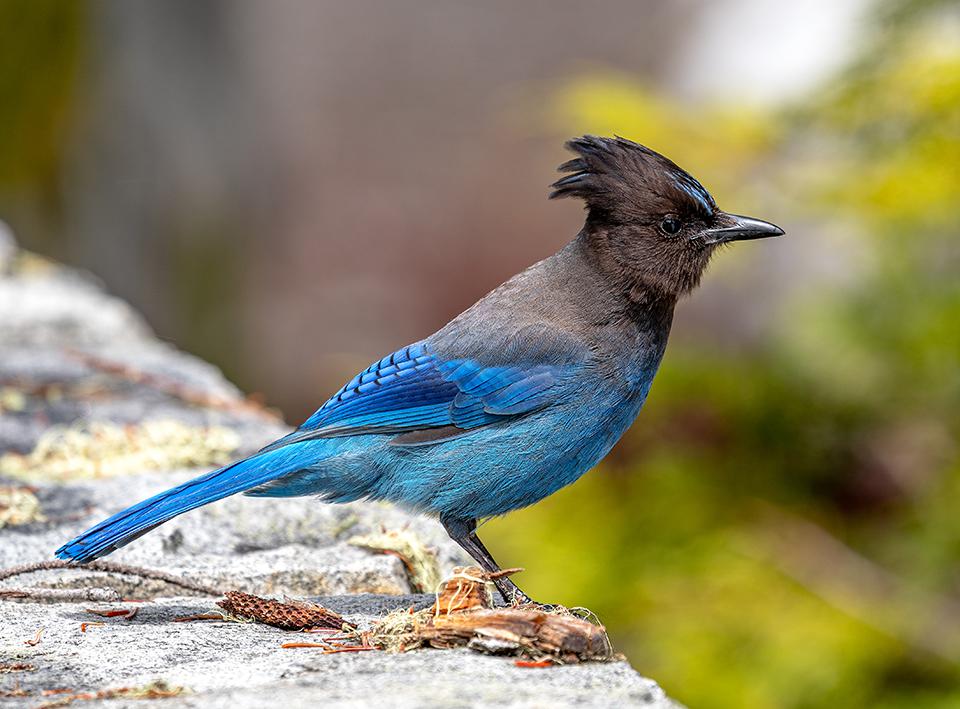
Steller's Jay, Mount Rainier National Park / Rebecca Latson
How many of you have your own Instagram account, or follow national park Instagram accounts? How many of you follow, or at least glance at the Traveler’s Instagram account @national_parks_traveler? I’ve learned quite a bit from other park and park-related Instagram accounts, so I thought I’d use the facts I’ve learned from them in quiz questions and trivia here. Test your knowledge before checking the answers at the bottom of this piece.
1. The Steller’s Jay and _____ are the only New World jays that use mud in the construction of their nests.
a) Canada jay
b) Blue jay
c) Green jay
d) Brown jay

Tarantula, Big Bend National Park / Rebecca Latson
2. True or False: female tarantulas may live to be 90 years old.
a) True
b) False
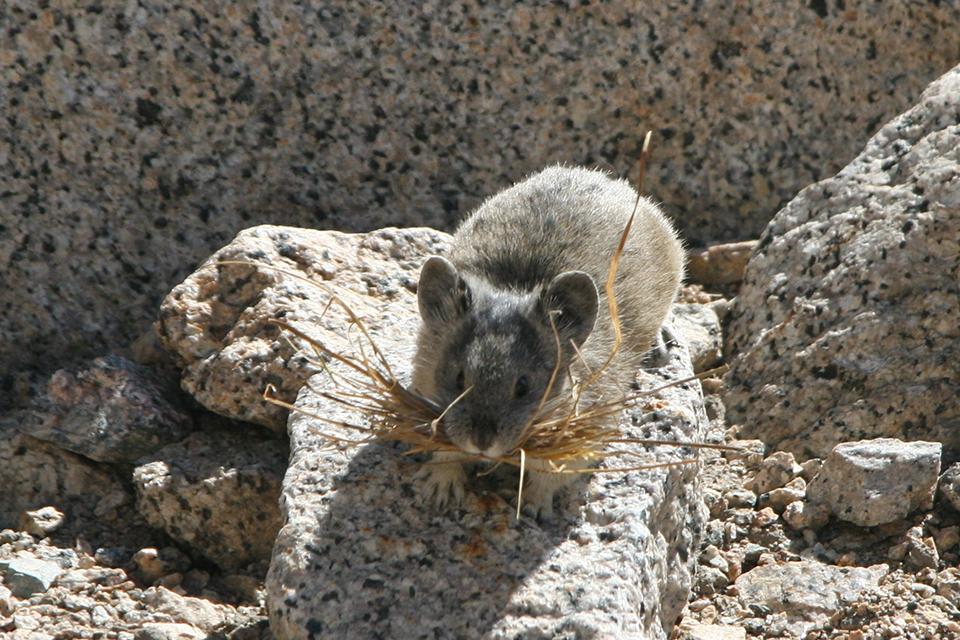
A cute little pika with a mouthful of grass, Sequoia and Kings Canyon National Parks / National Park Service
3. During the late summer, pikas will begin to gather mouthfuls of vegetation to build _____ for their winter food.
a) Sheaves
b) Ricks
c) Grass mounds
d) Haystacks
4. There are two unique coral reef systems just off the coast of North Carolina. The first reef system is called “The Outer Shelf Reefs” found about 75 miles off the coast at the continental shelf. The second is called the _______.
a) Lophelia Coral Banks
b) Brain Coral Banks
c) Stony Coral Banks
d) Deep Sea Coral Banks
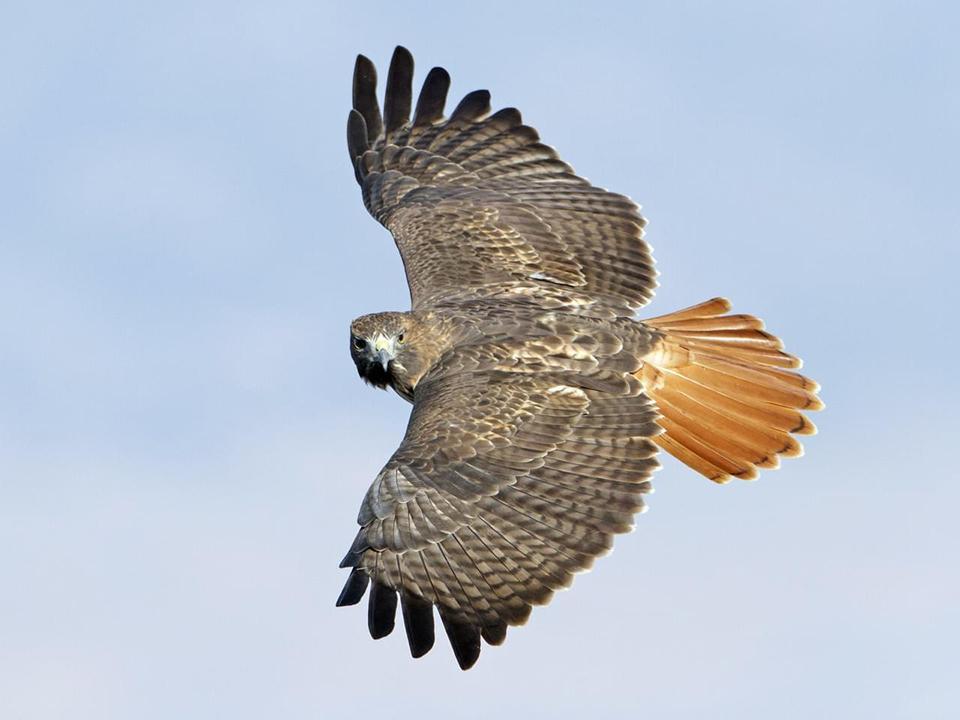
Red-tailed hawk in flight / NPS - Brian Sullivan
5. Cabrillo National Monument is known for its great bird watching. While visiting this national monument, you might see a red-tailed hawk. Red-tailed Hawks have eyesight that is _____ times as powerful as humans.
a) Three
b) Eight
c) Ten
d) Fifteen
6. Ripening beach plums (Prunus maritima) add colorful pink and purple hues to the national seashore’s early fall color palette. True or False: beach plums are beautiful, but they are poisonous and you should never pick them.
a) True
b) False
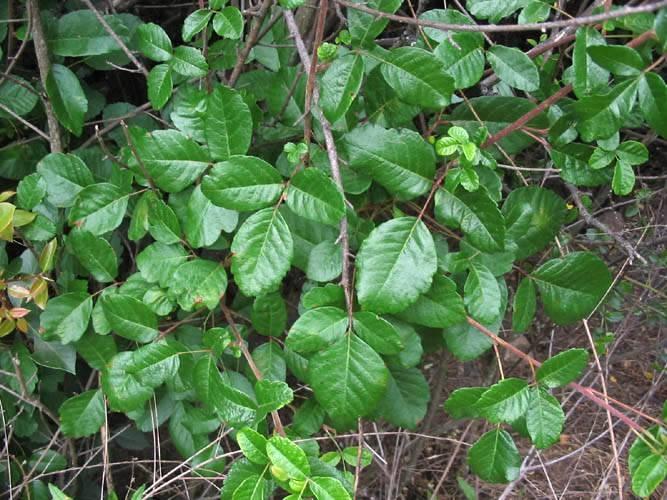
Poison oak, Santa Monica Mountains National Recreation Area / National Park Service
7. There are some plants and critters that can leave nasty impressions on us, causing rashes, blisters, and welts. For instance, there are three irritants that you can find in the Santa Monica Mountains: poison oak, chiggers, and ____.
a) Poison sumac
b) Poison ivy
c) Phacelia grandiflora
d) Leadwort
8. Let’s stick with @santamonicamountainsnps a little longer and talk about those pesky chiggers. True or False: chiggers are a type of spider.
a) True
b) False
9. True or False: “social paths” are unofficial trails.
a) True
b) False
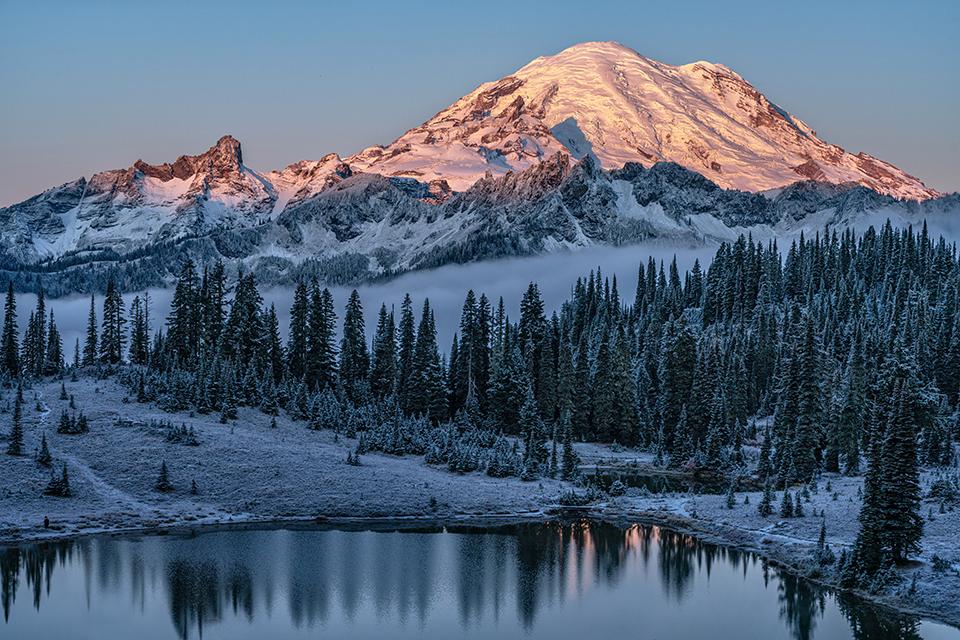
A frosty autumn sunrise over Tipsoo Lake and "The Mountain," Mount Rainier National Park / Rebecca Latson
10. The first Park Naturalist at Mount Rainier National Park lived to be ____ years old.
a) 90
b) 95
c) 105
d) 107
Trivia
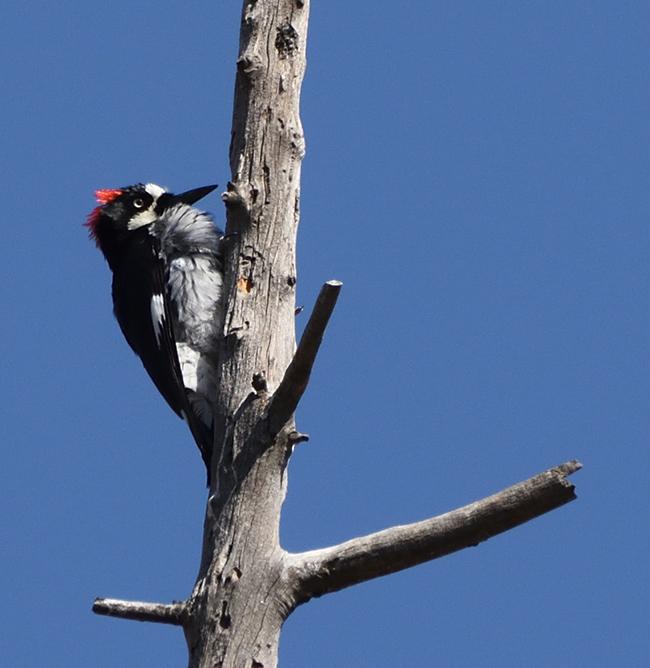
Acorn woodpecker / Susie King
Is your relationship status complicated? Acorn woodpeckers can relate.
Acorn woodpeckers are highly social birds who are often polygynandrous, meaning they form breeding groups of multiple male and multiple female mates.
According to a 2002 study, their “social groups can contain coalitions of up to seven cobreeder males vying for mating with up to three joint-nesting females,” though ratios of three males to two females are more common.
These goofy-looking woodpeckers love the mixed oak woodlands on the East side of Pinnacles, and can often be spotted by visitors near the Bear Gulch picnic area and the campground. Acorn woodpeckers can be identified by their red caps, white foreheads, and black backs, with white rumps and wing patches noticeable in flight.

A bust of Harriet Tubman, Harriet Tubman Underground Railroad National Historical Park / NPS-Chanda Powell
In 2020, the month of September was announced as International Underground Railroad Month in North Carolina. September is significant because it is the month that both Harriet Tubman and Frederick Douglass escaped slavery. Both freedom fighters were instrumental in operating Underground Railroad networks.
Great Smoky Mountains National Park is located in both Western North Carolina and East Tennessee, and the Underground Railroad is known to have operated in Blount County, TN, which is home to Cades Cove. The Religious Society of Friends, or Quakers, of Blount County raised funds and operated safehouses to assist enslaved runaways. Caves are believed to have been used as safehouses which stored food and supplies to aid Black people from nearby areas and states as they made their journeys to free states and Canada.

A snowshoe hare in its winter coat, Denali National Park and Preserve / NPS-Jacob W. Frank
Life in the subarctic of Alaska can be challenging. The short summers and long, intensely cold winters mean that the animals of Denali, including the Canadian lynx (Lynx canadensis), must constantly be on the search for food. While the lynx is capable of hunting any small mammal, it specializes in the snowshoe hare (Lepus americanus).
These two species are tied in an intricate dance known as a boom-and-bust cycle. When the snowshoe hare population is “booming,” the lynx has more available food, which leads to larger litter sizes and more kits surviving into adulthood. However, this puts more pressure on the snowshoe hare population. Eventually, every 9 to 11 years, both populations “bust” and plummet, creating cyclical patterns of loss and gain.
Quiz Answers
These answers are taken pretty much verbatim from what is written in each of the various Instagram accounts.
1b
The Steller’s Jay and blue jay are the only New World jays that use mud in the construction of their nests. FYI, Steller’s Jays form flocks outside of the nesting season and often fly across clearings in single file. A group of jays has many collective nouns, including a “band,” “cast,” “party,” and “scold” of jays.
2b False
Tarantulas have been around for more than 16 million years and comprise more than 900 species found across the world. They do have venom, but here it is about equivalent to a wasp sting. New World tarantulas also have barbed stinging bristles which they can brush from their abdomens in self defense. Tarantulas hunt centipedes, millipedes, beetles, and smaller types of spiders. In turn, they are eaten by predators like hawks, owls, coyotes, foxes and snakes. They are very long-lived (given the chance). Females may live 30-40 years, spending most of that time in their burrow when they are not hunting. Males mature in 2-5 years and seldom live more than a year or so after that, partly because of having to go out and find a female. The wandering individuals you see along the road are most probably males. The females stay in their burrows and the males follow hormone scents to try and find them. If you see one of these males, be kind and let him proceed on his mission.
3d
During the late summer, pikas will begin to gather mouthfuls of vegetation to build “haystacks” for their winter food. Haystacks are often built in the same place year after year and have been known to become three feet in diameter! Pikas are very sensitive to a warming climate and can help scientists detect subtle environmental changes.
4a
The second coral reef system just off the coast of North Carolina is called the Lophelia Coral Banks after the coral species that lives there. It can be located up to 100 miles offshore in water depths greater than 984 feet past the continental shelf. This reef thrives in complete darkness! Both reefs provide important habitat for life in the otherwise open ocean bottom.
5b
Red-tailed Hawks have eyesight that is eight times as powerful as humans which helps them locate their small and fast prey, like cottontail rabbits.
6b False
Beach plums are edible and collectible at the seashore? You are allowed to gather by hand up to one gallon per person, per day, for personal use or consumption only. Many people consider the fruit too bitter to eat raw. Do you have a favorite beach plum recipe?
Other commonly collected edible fruits in the seashore include blueberries, cranberries, raspberries, blackberries, and rose hips. For your safety, make sure you can accurately identify the fruit you are collecting to confirm it is edible. If you’re unsure, check with rangers at visitor centers.

Large-flowered phacelia, Santa Monica Mountains National Recreation Area / National Park Service
7c
There are many species of phacelia in the Santa Monica Mountains, whose flowers are known to be a vibrant color. They also tend to grow soon after a wildfire. Some species of phacelia, however, such as the Phacelia grandiflora (large flowered phacelia) are known to be hairy, sticky, and may secrete oils that can cause a skin rash. These rashes are comparable to poison oak and vary depending on sensitivity to the secretion.
FYI, did you know that sticks and twigs of poison oak can also transfer that troublesome oil, urushiol, to our skin? Don’t burn these plants as the smoke can be very toxic and you do not want to get that rash on your insides?
Sticking to the trail is the best way to ditch the itch.
8b
Chiggers are not spiders, although they do belong to the same class as spiders: Arachnida. Chiggers live in tall weeds and grass and are most active from spring through fall and will quickly attach themselves to you if you brush up against tall grasses. You won’t feel it when they bite you, but the bites they leave behind may look like welts, blisters, or hives. Bites will be found around the ankles, waist, armpits, pelvic area, or behind the knees. Scratching only makes those bites worse.
9a True
Ok, this one was a “gimme.” Once an unofficial trail – also called a social path – gets established, it is difficult to reverse. How many people does it take to create an unofficial trail through a sensitive area? Just one. Once someone walks off the trail to catch a better view, snap a selfie, or take a shortcut, others follow. Before long, there’s a new path. This causes problems. New paths bisect animal habitat, disrupting wildlife behavior and movement patterns. Erosion often occurs along paths that have not been professionally designed and construction. Sensitive archeological areas may be exposed. And plants get trampled. So, help out the park and its environment and please stay on the trail.
10c
Did you know that the first Park Naturalist at Mount Rainier National Park lived to be 105 years old? Floyd Schmoe was born in 1895 in Kansas and found his way to the Pacific Northwest in 1919. He became a full-time ranger at Mount Rainier in 1922 and documented many of his observations in his “Nature Notes.” Without Floyd, we may never have had park rangers as we know them today. His love of Mount Rainier National Park and his commitment to sharing that love with visitors became part of a lasting goal that we still aim for. However, it is difficult for us park rangers to compete with an individual who went on to be nominated for a Nobel Peace Prize three times for helping with the construction of homes, orphanages, hospitals, and irrigation systems all over the world after his time at Mount Rainier. Floyd Schmoe set the bar pretty high.
References
In addition to the Instagram accounts and websites for these National Park units, I used the following as references:
https://www.audubon.org/news/seven-nifty-jays-arent-blue-jays
https://agrilifeextension.tamu.edu/library/landscaping/chiggers/



Add comment